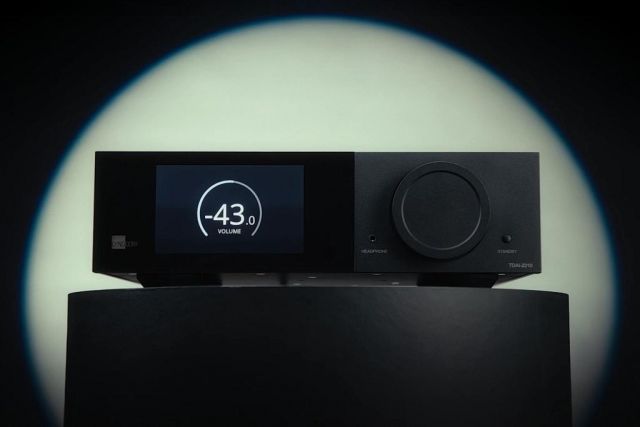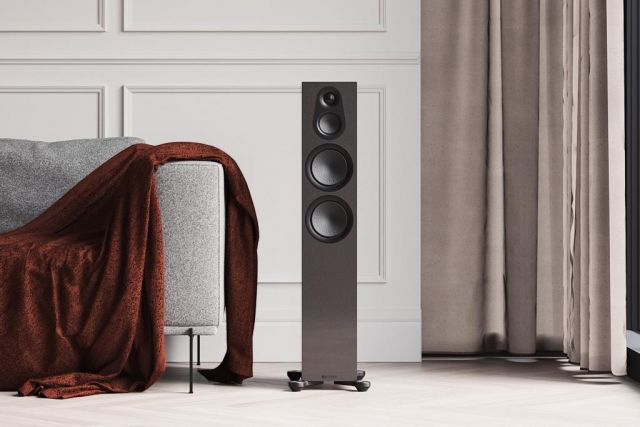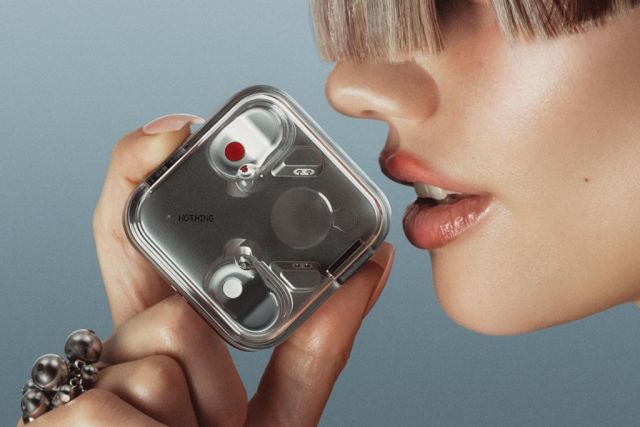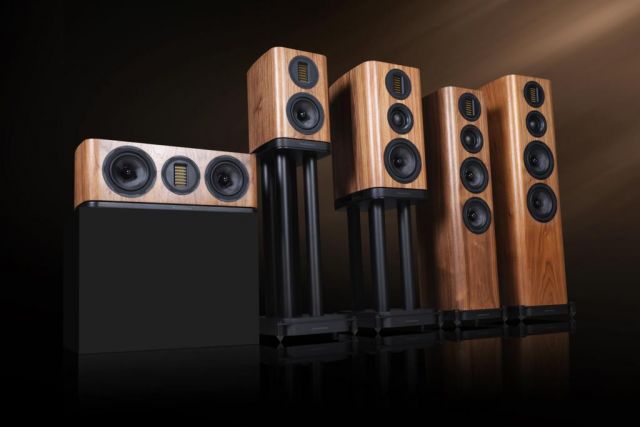
- Articles
- Posted
Over a century of spinning - A history of Dual
Dual is one of the brands highly regarded by audiophiles, vinyl enthusiasts in particular. And there's a good reason for that. The German manufacturer has produced so many outstanding turntables that it's hard to count them all. A well-preserved or restored Dual can be connected to any stereo system, even an expensive one, and not only will it look great, but with an appropriate cartridge, it should also sound so good that new, mid-range turntables will hide under the sofa with shame. Until recently, if you wanted to buy a Dual product, you would have to be patient, search through popular auction services and find a professional who could bring old electronics to factory condition. Fortunately, today Dual's products are not only museum pieces, decorations in trendy cafes, or turntables for connoisseurs who can appreciate the quality of their craft and sound. After the reactivation of the company, you can now purchase them again in audio stores. How did it come about? Is it something more than a short, one-time spurt? And why did so many vinyl fans get goosebumps just hearing that Dual was back in business? To find out, we decided to look at the company's history and find out what makes it so unique.
Many hi-fi manufacturers with a long history have had their share of successes and failures. There have been acquisitions, unexpected events, delinquencies, mergers, technical breakthroughs, bankruptcies, government subsidies, and other adventures, which from today's perspective seem unimportant as long as the factory is still functioning and doing well. Unfortunately, it's not always so obvious. Some legendary brands said goodbye to the audio industry for good, and there is little chance we will ever see their products in stores again. Some survived only thanks to their heritage and the memory of great devices they produced even decades ago. Some are thriving, both on a business and quality level, while others have been acquired purely for the logo that's now seen on amplifiers and speakers that have nothing to do with those built before.
How can a well-known, respected, well-functioning company get into trouble? There can be many reasons, and it's not always caused by the engineers, management, or any errors that translate into decreasing product quality and weakening brand reputation. Sometimes external factors or misguided predictions come into play. That's what happened to many turntable specialists when music lovers began switching to tape recorders and compact disc players. Not only did they opt for a different medium, but they were also more and more willing to choose Japanese equipment. What to do in such a situation? Change direction, re-brand, and go with the mainstream? If you have been making turntables for several decades, it's not that easy. Besides, it doesn't solve the problem of rising production costs anyway. Move the factory to where the competition came from? It's an idea, but how to explain it to thousands of employees? In the 1980s and 1990s, many European electronics manufacturers went under in just this way. Fortunately, all is not lost. Dual has proven that it is possible to come back in style even after years of complete stagnation. But before we get to that, let's start from the beginning.


One day in the 19th century...
The origins of Dual can be traced back to 1900 when, in the small town of St. Georgen in Black Forest, the Steidinger brothers Christian and Joseph, who knew how to build precision parts for watchmakers, began producing watch components and purely mechanical tooling. The idea for a business requiring specialized knowledge and rare skills didn't come from anywhere, of course. Christian and Joseph were not the first members of the Steidinger family to engage in precision mechanics. It can be said that the secrets of building parts for watchmakers were passed down from generation to generation. Initially, the factory was located in Christian's house and operated somewhat unofficially. It was not until 1907 that it was registered as Gebrüder Steidinger Fabrik für Feinmechanik (Steidinger Brothers Precision Mechanics Factory).
What's even more important than such formalities, at this stage, the Germans were already engaged not only in the production of watch parts but also in making hand-wound drive systems designed for gramophones. In 1908 this solution was presented to the public for the first time at the Leipzig Trade Fair. Visitors' interest must have been enormous because in 1909, the company produced 80000 drives. If we deduct the days off and various holidays, this equates to 1000 units assembled within three days! It became clear that the future of the family business was not in watch parts, nor even in the components required for the manufacture of such equipment, but in the design and manufacture of complete turntables under their brand name.
At some point, the Steidingers had to come to terms with their vision for the company's future. In 1912 when the brothers decided to go their separate ways. Christian continued the business he had started with his brother, while Josef separated from him and founded his own company, Perpetuum. Interestingly, this name will appear at least once more in our story, but for now, let's not anticipate the facts. For the company run by the second brother, Christian, 1927 was a turning point, so important that many articles consider it to be the official start of the German manufacture. And not without reason, because it can be said that the company was born again thanks to a single invention. The production capacity of the company, which name at the time was shortened to Gebrüder Steidinger, was remarkable. Now 1500 turntable drives left the factory every day. With such a large number of orders, it would have been safe to lay back and celebrate the enormous success, but Christian Steidinger came up with a brilliant, revolutionary idea.

Dual Motor
To get a complete picture, it's essential to realize that in the late 1920s, access to electricity was not yet taken for granted. Large cities were at least partially electrified, while in smaller towns, not to mention rural areas, electricity was a luxury and, for some people, a novelty - something they had never seen in action, apart from lightning. The use of an electric motor to power the turntable was a natural progression, but at the time, a backup drive in the form of a hand-wound spring mechanism was needed. The breakthrough idea of the St. Georgen company was to combine these two technologies. When the first Dual Motor design was launched, which used two types of drive - a clock spring mechanism and an electric motor - it was clear that this was the way to go. The freedom of use of the turntable, which was guaranteed by this innovative, unusual solution, allowed the Germans to achieve incredible success. The inventors of the Dual Motor were Emil Knecht and Herman Papst. The latter had worked at Dual for 10 years at the time. Later he founded his own company, which is now one of the leading manufacturers of electric motors and fans for household appliances like refrigerators, freezers, dryers, as well as computer cooling systems and automotive industry. One of ebm-papst's factories is located in St. Georgen and concentrates on developing the company's legendary tubeaxial fans. Dual or, as we would say today, hybrid drive systems were adopted not only in Europe but also in the United States. Dollars were flowing in a wide stream to St. Georgen, allowing the company to grow at an accelerated rate.
As time went on, the demand for electric motors without a backup manual drive grew, so the company gradually started producing just such components. By 1928, it made as many as 10,000 turntable motors per month. However, another event was far more critical. The Germans started working on their first cartridge. It was the last element they needed to create a complete gramophone. Of course, it was still necessary to design its own tonearm, platter, base, control, and a few other vital components, but this was not as much of a challenge for the German engineers as creating the cartridge - a part requiring advanced technology and microscopic precision. The first pickup was designed in 1936 by Herman Papst. The first turntable developed from start to finish by the company from St. Georgen was an outstanding achievement, which enabled the company to grow from a supplier of electromechanical components to a major manufacturer of audio equipment. At the same time, another important decision was made. It was rightly felt that the Dual Motor had become more recognizable than the company behind it, so it officially changed its name to the one we know today - Dual.
When it seemed as if further breakthroughs were only a matter of time, the company faced its first major blow. In 1937, the author of its success, Christian Steidinger, died. Management of the company was taken over by his sons Oskar and Siegfried. The death of their father was undoubtedly a big issue to them, but one can guess that they were not only concerned about how to continue the business of the factory he had founded. The specter of great turmoil was already hanging over Europe and the whole world. A civil war was brewing in Spain, the trial of communist leaders accused of participating in a plot to overthrow the system and assassinate Joseph Stalin had begun in Moscow, and Adolf Hitler had announced the withdrawal of Germany's signature from the Treaty of Versailles. On September 1, 1939, Nazi Germany invaded Poland, beginning World War II. In Dual's history, a hiatus starts that lasted until 1949.
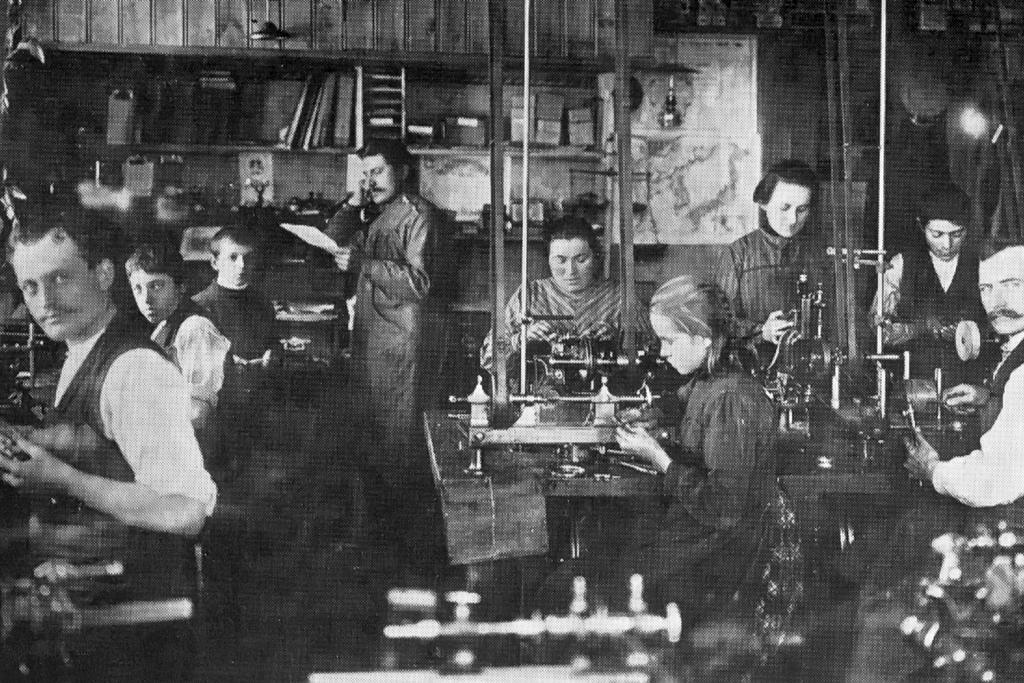
On the wave of the post-war boom
The post-war period was a time of strong economic growth, quickly making Dual the largest turntable manufacturer in Europe - an enterprise employing over 3,000 people in several factories. In 1949 the company launched its first 78 rpm record changer, the Model 1000. The 1950s saw significant technological advances in music reproduction. Bold ideas and the expansion of mass production brought better results. Dual supplied complete turntables and drives and changers built into jukeboxes, providing an additional source of income for the profitable company. In 1952, a phono cartridge was introduced that put only 6 grams of tracking force pressure on a record. Today we would see this as extremely high, but at the time, it was an impressive result, allowing the record to be used less each time it was played without sacrificing sound quality. Four years later, the company introduced its first compact system, consisting of a turntable, amplifier, and speakers in a single box. Meanwhile, in the world of recording and sound reproduction, a real revolution begins. The BBC broadcasts its first stereo program, and it becomes clear to many listeners that the future is all about two channels.
The breakthrough in the work to bring stereophony under the roof came in 1958, when several record companies, including RCA and Decca, adapted the LP to play audio recorded in two channels, using the technology in which each wall of the groove contained one of the channels. With the support of major electronics companies and record labels, stereo sound became a hit. Recording engineers quickly discovered new ways to manipulate two-channel sound. Originally the idea was to achieve higher fidelity, but many musicians became enamored with it and began using the latest technology to create entirely new sounds. Creating the illusion of instruments and voices moving around a listening room was regarded as very impressive. Since few people owned stereo turntables, record companies had to release almost every new album in both stereo and mono formats. This irritated both consumers and record retailers, who had to stock different versions of each release. Playing a stereo record on mono equipment damaged the discs due to the different sizes of the needle. It became necessary to accelerate the spread of stereo equipment. Dual responded to the changes very quickly. The Germans didn't even wait until the end of the decade, introducing the first turntables with dual-channel cartridges back in 1958. This gave the company peace of mind to work on its following inventions. A year later, the company offered turntables with four-pole motors and drive transmitted to the platter. The company also developed an exciting system for stabilizing records, in which they could be stacked for repeated playback. In 1960, the model 1008 saw the light of day, equipped with an automatic disc size detection system.
The Germans stuck to the accepted numerical scheme, presenting successive products whose four-digit symbol began with a one. In the 1960s Dual's first market hit was the 1009, the first fully automatic turntable sold worldwide. It was the first model with the direct idler wheel, and by some clients and experts, it was considered the first audiophile player coming from Dual. The company also introduced an extremely precise ball-bearing-mounted tonearm with a contact force of just 0.5 grams. Thanks to the lower friction of the new tonearm, the new anti-skating function was also available. This solution was further developed in the 1019 model presented in 1965, which became another bestseller of the German manufacture. It introduced a silicon damped lever lifting the tonearm, which became a standard for all future devices of the brand. The headshell was made of lightweight magnesium alloy. Like the 1009, the 1019 was very popular in the US market. Four years later, the 1219 was introduced, which was Dual's first turntable with a 30-cm platter and dual gimbal bearings. However, even more, interesting was the use of four-pole synchronous motors, which allowed the turntable to start up when the tonearm was removed from its support bracket. This technology meant that the listener could make mistakes in operating the device, and it would not damage the turntable.
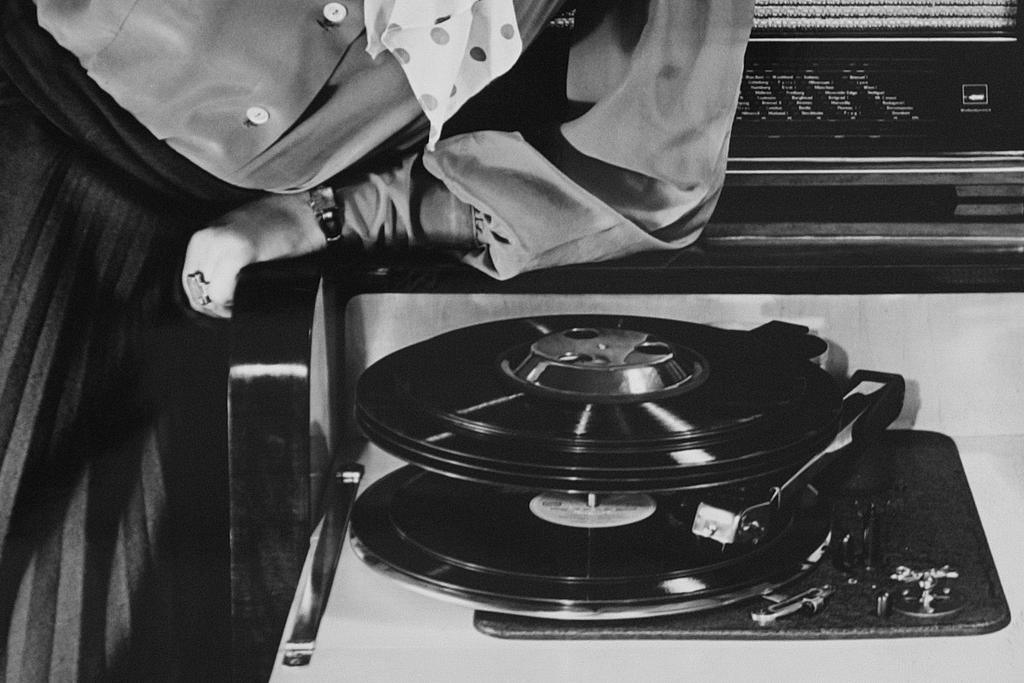

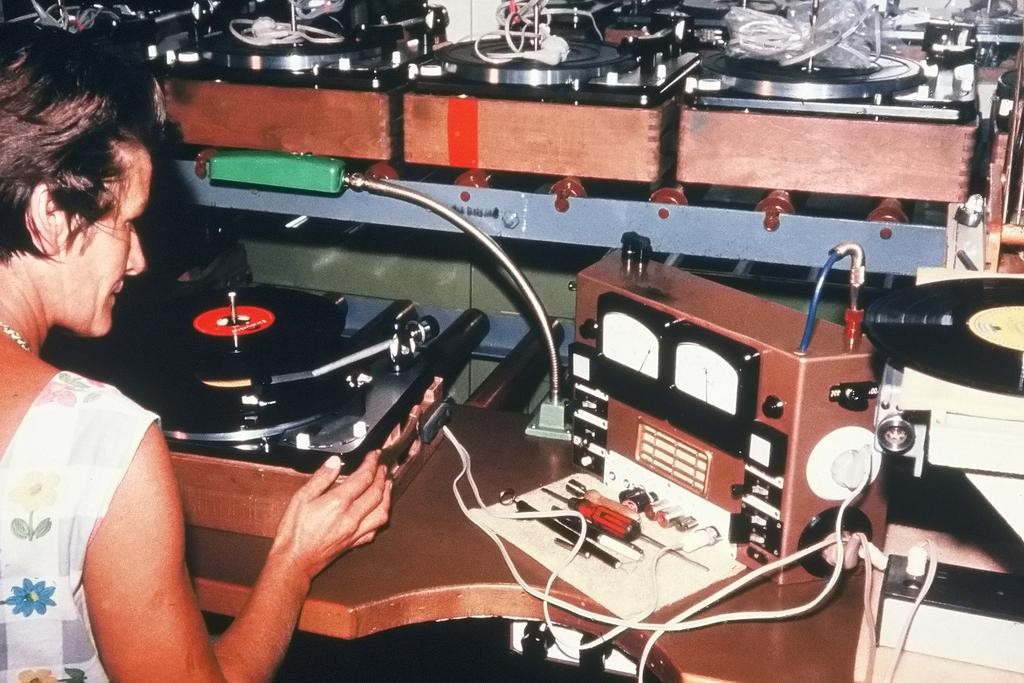
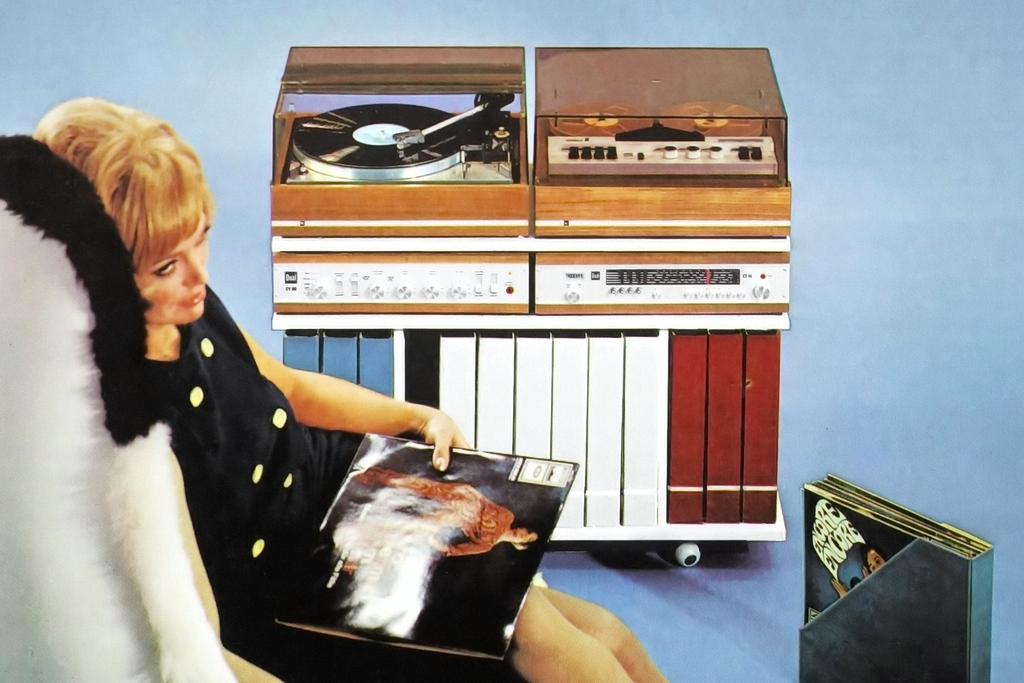
The seventies
At the start of the following decade, turntables were just one tab in the extensive catalog of the Steidinger family business. Dual had exploded to the point where they offered customers complete hi-fi systems, including amplifiers, radio tuners, tape recorders, loudspeakers, and even portable equipment. Everything seemed to indicate that nothing could stop the St. Georgen company, which was confirmed by the high-profile acquisition of one of its biggest rivals. Remember when Josef Steidinger founded his own company called Perpetuum in 1912? Well, over sixty years later, it was operating under the name Perpetuum-Ebner and doing quite well. However, Dual was much more powerful and absorbed the factory founded by Josef Steidinger. Interestingly, Perpetuum-Ebner brand was reborn on the wave of the vinyl renaissance in 2014 and is still active today, offering very original hi-end turntables.
An essential moment in the German company's history was the launch of the fully automatic model 701. It was the first direct-drive turntable manufactured in Europe. It was also equipped with an innovative system of simultaneous damping of the drive resonance by a flexible connection of structural elements based on springs. A two-piece anti-resonator was tuned to a specific frequency, creating a system to dampen vibrations before they even had a chance to transfer to the platter, tonearm, and cartridge. It is worth mentioning that from a technical point of view, direct drive has no noise, so it doesn't need any damping unlike normal DC and AC motors. The spring-loaded sub-chassis was introduced with the 1219 model in 1969. It decoupled the turntable to any ground-born vibrations. The anti-resonator in the counterweight was to minimize the tonearm resonances. In 1973, a four-channel sound reproduction apparatus was unveiled at the Consumer Electronics Show in Berlin. Some music lovers expected quadrophony to become the same breakthrough as stereophony. Rather than wait, Dual immediately launched a complete line of quadraphonic components, just as it had fifteen years earlier. In 1974 Dual completed its first cassette player, the C-901, an advanced product for its time with features such as auto-reverse, self-demagnetizing and auto-adjusting heads, vertical and horizontal operation, and Dolby B noise reduction. In parallel, turntables were, of course, developed, as evidenced by the introduction in 1975 of the first fully automatic model with belt drive, eight-pole motor, and Vario-Belt system.
The seventies were a period in which the German manufacturer continued to introduce innovative products to the market but slowly began to feel the breath of Japanese competition on its back. In 1977, the first cassette recorder with a front-loading system, the C-819, was introduced. This model was equipped with a fader adjustment, a photoelectric control system, and the ability to mix sound from a microphone and other sources. What seems even more important from the user's point of view, it could handle all the popular tape types of the time. A year later, Dual's first turntable with an ultra-low mass tonearm appeared on the market. It featured an advanced anti-resonator and an electronically stabilized drive system. The device also had a stroboscopic illumination built using LEDs. The catalog also featured the first remotely controlled cassette recorder, the C-839RC, equipped with state-of-the-art microprocessor technology. In 1979, arms made in ULM (Ultra Low Mass) technology were presented. Thanks to this solution, the mass of the arm-cartridge system was reduced by 50% compared to other turntables manufactured at that time. Weight reduction resulted in better contact between the cartridge and the platter while also increasing the life of the platter bearing. 1980 saw the introduction of the SM series, which included an amplifier, radio tuner, receiver, turntable, and cassette player. A year later, the company joined another revolution by introducing its first compact disc player. An interesting idea from that time was the CS 741Q turntable with a cover mounted on special hinges, thanks to which the device could be pressed against a wall or placed on a bookcase.

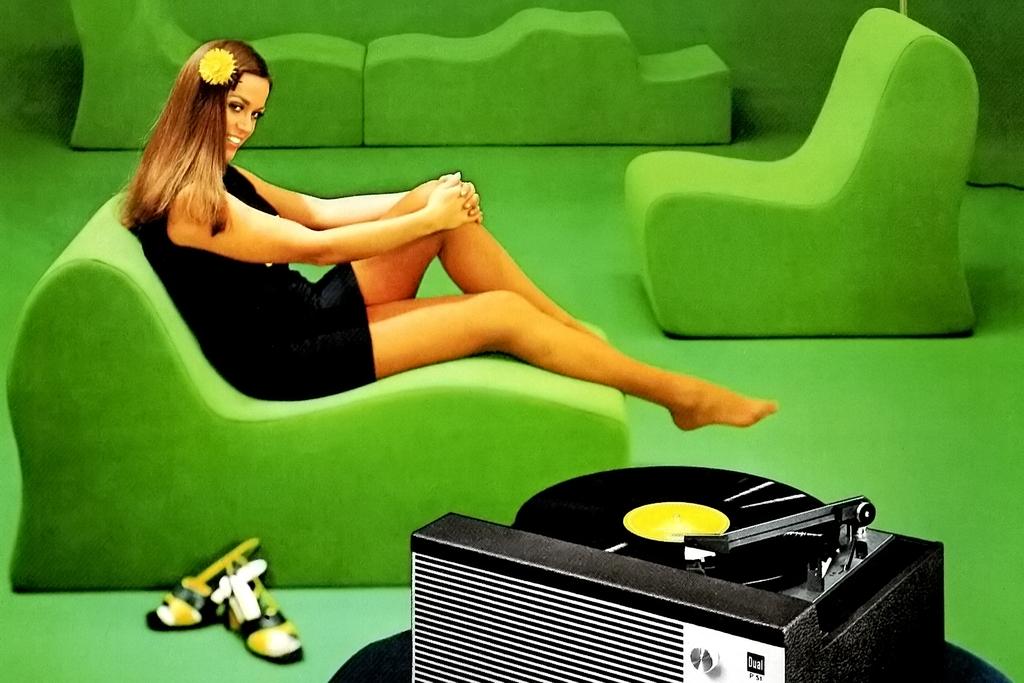


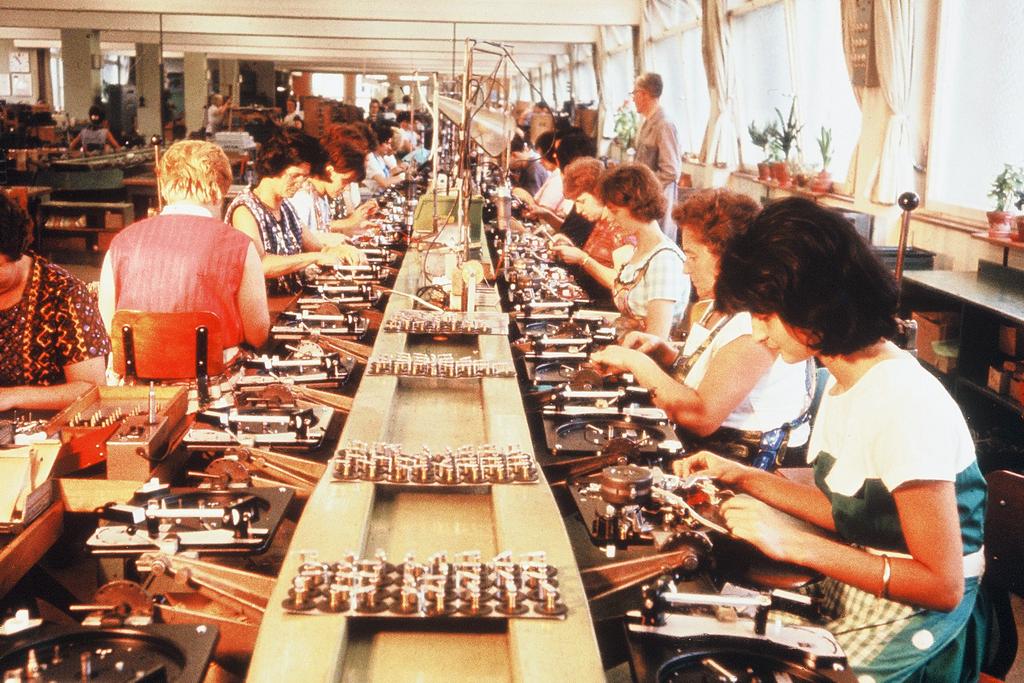
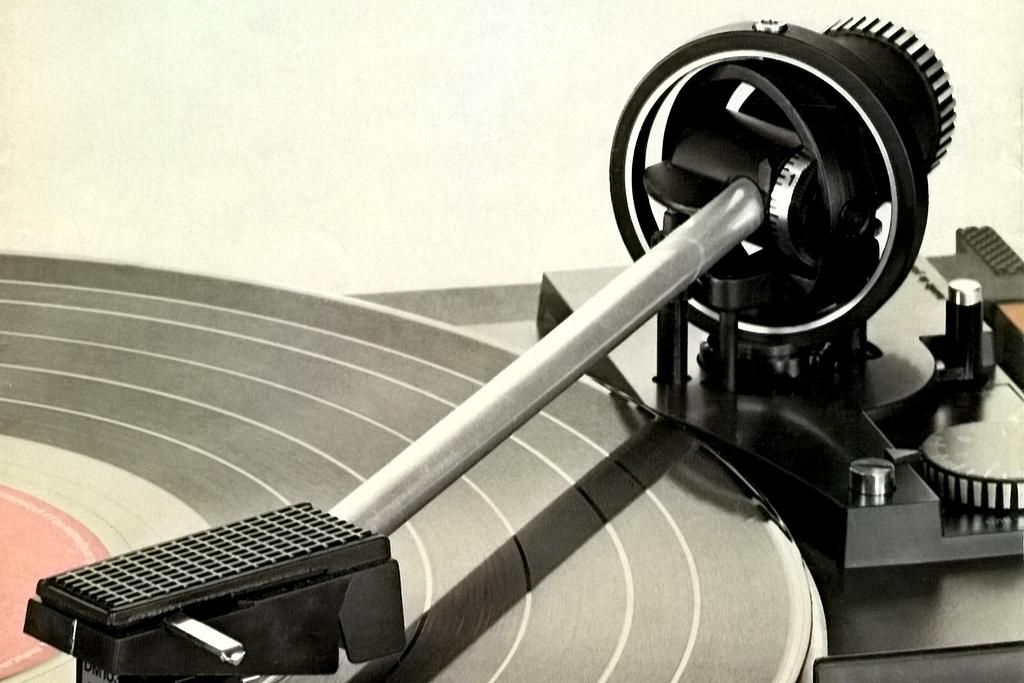
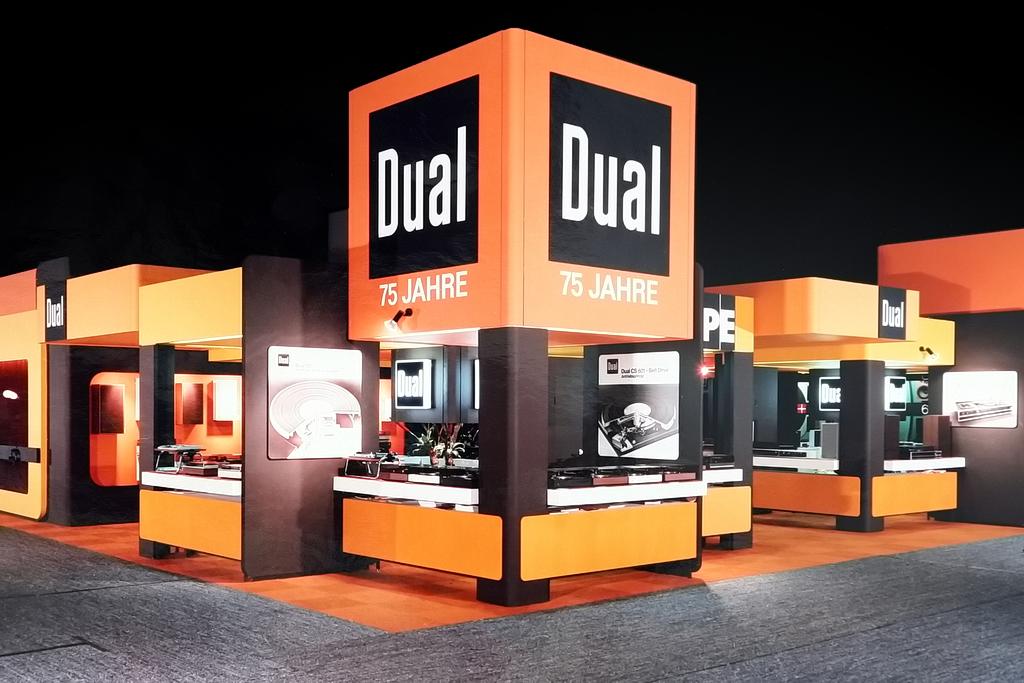
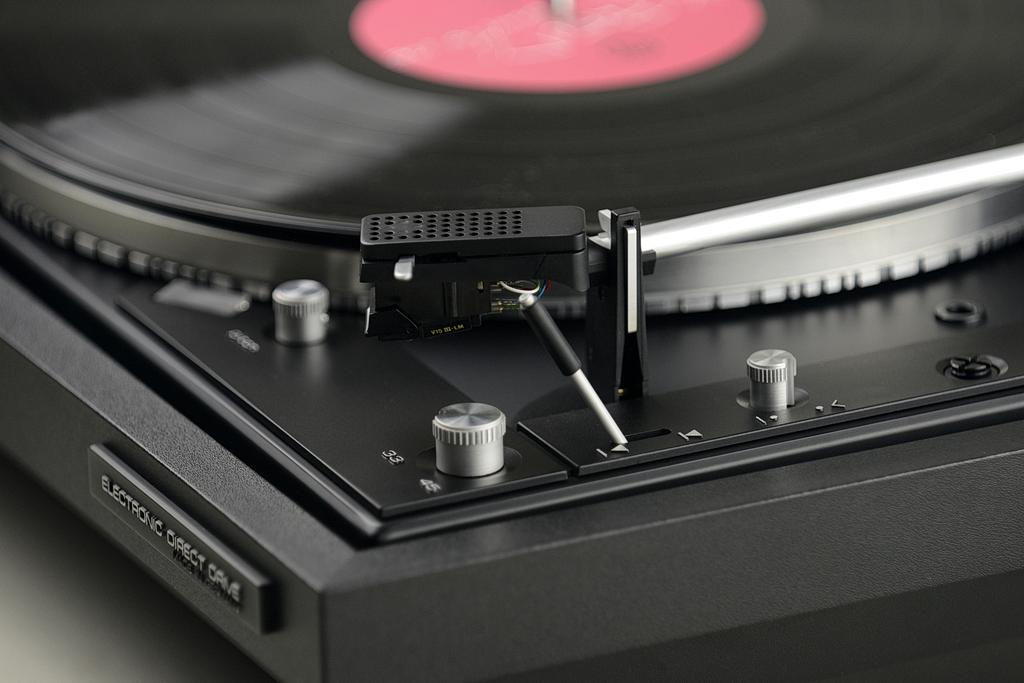




Nothing can last forever...
Analyzing successive inventions and successes of the German manufacturer, it might seem that at this very moment, it will enter the key phase of development, crushing the competition with its technology, and even taking over subsequent brands, as it did earlier with its eternal rival, the Perpetuum-Ebner company. Unfortunately, the reality was less colorful. At the end of the seventies, the market for audio equipment began to be conquered by Japanese competitors. This gear turned out to be better and longer-lasting than the customers thought and had a significant advantage over European rivals - simply put, it was much cheaper. It was extremely difficult for the company, which relied primarily on innovative technical solutions and production of high-end equipment, to oppose the mass-produced budget products from Japan, which did not want to break down after a few years. German engineers were unwilling to compromise on quality, and when they realized they had no other choice, it was already too late. Like so many other European electronics manufacturers, Dual was eventually forced to declare bankruptcy, which it did in 1981. Most notably, the employees themselves were unable to come to terms with this, and they continued for some time, supported by the dealers, for whom the bankruptcy of one of their key suppliers was a real drama.
On July 1, 1982, the company was bought out by French Thomson-Brandt, which already held the rights to the Nordmende, Telefunken, and Saba brands. Thanks to that move, Dual could continue to operate peacefully, continuing production and developing new designs. Under the new owner, the German manufacturer also gained access to technologies its designers had not yet encountered. In 1985 Dual somewhat returned to its roots with its new flagship turntable, the CS 5000, a completely hand-operated belt-driven turntable with a solid wooden chassis. It featured a carbon fiber tonearm with vertical tracking angle (VTA) adjustment, and a solution called the Optimal Pivot System (OPS). That same year Dual introduced its first compact disc player built from the ground up in Germany, the CD-40. 1987 saw the arrival of another reference turntable called the Golden One. Dual's new flagship combined technology from the CS 5000 with a high gloss black plinth and 24K gold plated metal parts.
Just five years after the brand was acquired by Thomson-Brandt, the first signs of fatigue began to appear at the headquarters. The parent company decided to downsize the Dual factories in St. Georgen and subsequently divest itself of the German brand. It was bought by - no, you certainly wouldn't guess it - Perpetuum-Ebner. It was a strategic move designed to preserve the assets of the German manufacturer and save it from total collapse. Dual was soon linked with Schneider Rundfunkwerke, a German company that specialized in low-cost mass-market electronics. Dual's logo appeared on a variety of consumer electronics that had nothing to do with the legendary German quality. At one point, the product line even included TV sets. Economically it may have made sense, but audiophiles must have been pretty horrified. In 1993 Dual started making losses again, and its last factory closed for good. All turntables were from then on manufactured by an outside contractor, Alfred Fehrenbacher, located in - oh, what a coincidence - St. Georgen. Schneider Rundfunkwerke was restructured and sold the Dual brand to Karstadt AG department store chain, which released its own products with a new retro-style emblem for several years.
Since then, the German manufacturer, from time to time, reminded music lovers of its existence. In 2002, after declaring insolvency, Schneider Rundfunkwerke was taken over by the Chinese company TCL, which today is known for producing TVs and soundbars. Taking advantage of this fact, in 2003, TCL started selling Chinese electronics under the Dual brand, but nothing came of it in the long run. Dual's factory in St. Georgen was rebuilt and became a trade school. A turntable museum was established in the city and became one of its biggest tourist attractions. As you might guess, its display is primarily focused on Dual's equipment, honoring the brand for all its achievements and contributions to the town over the years. In 2007, the rights to the brand fell back into German hands, with DGC issuing Alfred Fehrenbacher's company a license to manufacture and sell turntables under the Dual brand. However, the biggest problem was that after all that turmoil, customers' needs had changed entirely. The market was dominated by compact discs, whose only threatening rival was no longer any physical medium but files and the fledgling streaming service. Turntables were bought only by exceptional enthusiasts of analog sound, who, as a rule, rarely changed the equipment used for playing black records, and when they did, they looked for a new turntable starting from catalogs of prosperous manufacturers rather than producers who barely managed to stay afloat. As of 2007, the historical chronicle on Dual's official website begins a hiatus that was to last more than a decade.

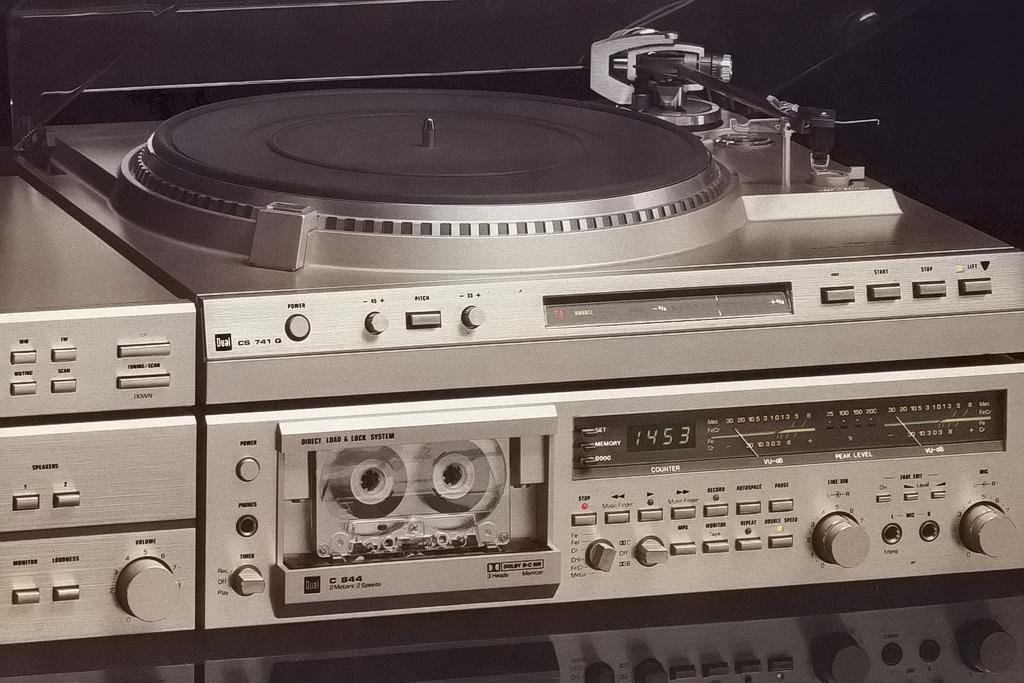

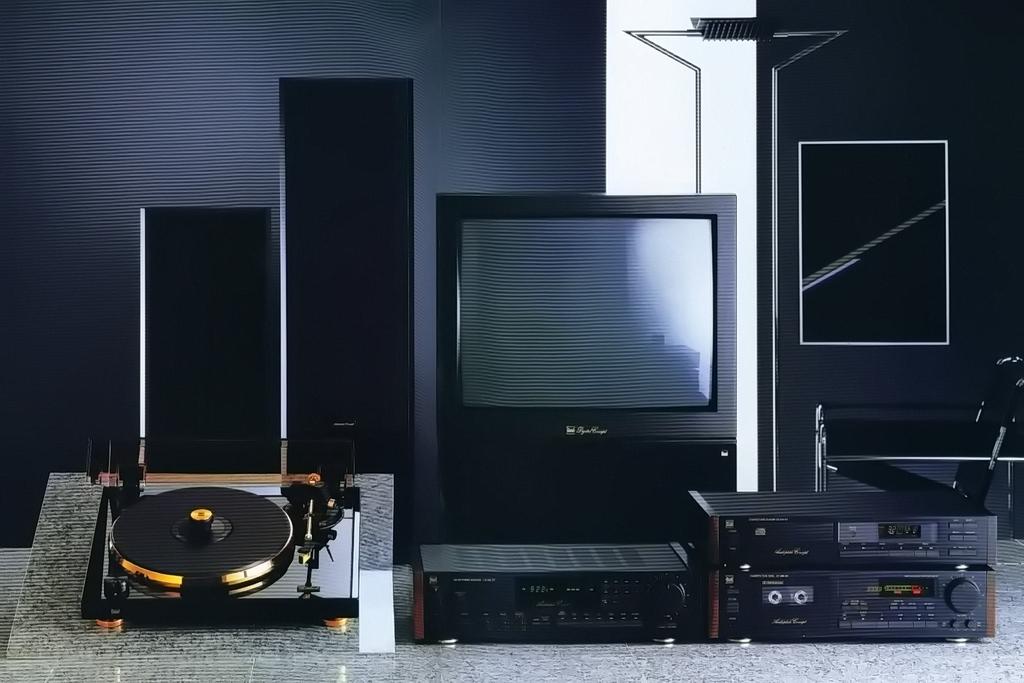


Revival
Dual has been sorely missed by many music lovers and audiophiles, as well as residents of St. Georgen and the surrounding communities. Thanks to their dedication and passion, more than just a logo and a history spanning more than 100 years has survived, and the growing consumer interest in vinyl records and turntables has made the company's reactivation more than just a dream to celebrate its rich history - it has suddenly become simply the right business move. In the era of the vinyl boom, such a venture had to be an immediate success. Josef Zellner, a man who had been involved with Dual since the early 1990s, took the plunge. In 1992 he started as an assistant to the board of directors of Schneider Rundfunkwerke, and by mid-1993, he was already Dual's export manager. Let us add that these were tough times for the turntable industry, as black discs were giving way to compact discs. In late 1994, Josef made his last turntable supply deal. The deal included 40 Silver Stone, Golden Stone, and Golden One turntables, which went to Japan. Realizing that analog media and sound sources were facing tough times, Josef went back to university. He did his Ph.D., and in 2000 joined DAB bank in Munich, where he was head of human resources, then head of sales, and finally a member of the board. However, he stayed in touch with his former colleagues at Dual and, in 2017, came to terms with the man he still worked with at Schneider Rundfunkwerke, Christoph Homberg. He thus became the owner of Dual, taking on the position of managing director. His vision to re-establish the company as a world-renowned turntable manufacturer began to take shape in 2018. A year later, Dual unveiled several products at IFA in Berlin, and in 2020 it officially changed its name to Dual GmbH. Today, its headquarters are located Fuchstal, Bavaria. The company has its own research and development center in Kiefersfelden. Also worth mentioning is the museum created by Alfred Langer - an audiophile, collector, and turntable specialist who produces both complete units and OEM parts such as arms and drives under his own name. His designs are, to some extent, based on what Dual developed many years ago. He is also the man behind Dual's new flagship, the Primus Maximus turntable, unveiled in 2020. Today, the German company's turntables are already sold in more than 30 countries, including the US and Canada.
Dual's rapid growth has been primarily due to combining a rich tradition with a business model based on current customer needs. To put it bluntly, the Germans have realized that their equipment is associated with innovative technology and high-quality workmanship, but rebuilding factories, training their staff, and perhaps even digging out the old designs and rebuilding them using modern materials and manufacturing techniques is a task that could take many years. Meanwhile, music lovers all over the world are buying turntables on a daily basis and demand sensible, well-designed, but also reasonably priced equipment, with which they too will be able to start their adventure with vinyl anew. In order to meet that demand and rebuild the brand's reputation beyond the €9900 high-end turntable, Dual went to the other end of the scale with a series of budget turntables, starting with the CS 418 and CS 518. As with most of its competitors, they are made in China, but it is worth noting that the Germans design or supply many of the components, the quality of which is most important for the turntable's performance and reliability. As sales manager Lothar Mertens explains, it would be unreasonable to design simple, trivial, and sonically unimportant components such as the feet or the dust cover and hinges for an inexpensive turntable, but when it comes to the motor, tonearm, platter, and other components on which sound quality depends, it is a different story. So Dual's budget machines may at first glance look a little different from their rivals. Still, on closer inspection, the differences are considerable and concern those areas that audiophiles should care most about. Besides the typical mechanical parts, it has become a tradition, for example, to mount high-quality cartridges.
In addition to the two turntables mentioned above and the flagship designed by Alfred Langer, the catalog included a very interesting model CS 618Q with direct drive, electronic speed stabilization, automatic stopping when the record ends, double gimballed tonearm, and factory fitted Ortofon 2M Blue cartridge. Dual recently announced the fully automatic CS 429, as well as a more expensive version with wireless connectivity, the CS 529 BT. Dual presented several more prototype models at closed shows and press conferences. The cheapest representative of the CS series will be the CS 329 - a straightforward design ready to use practically out of the box. The manufacturer assures that all settings such as counterbalance, anti-skating and tonearm, and cartridge geometry will be factory set and will not require further adjustment from the user's point of view. However, the long-term plan is to gradually close the gap between the flagship model and the CS series. It is likely that over the next few years, Dual will introduce some mid-range turntables reminiscent of the cult models of yesteryear. And will we see even bolder moves, such as resuming the production of stereo components? It is hard to say. For now, it is too early to make such plans.
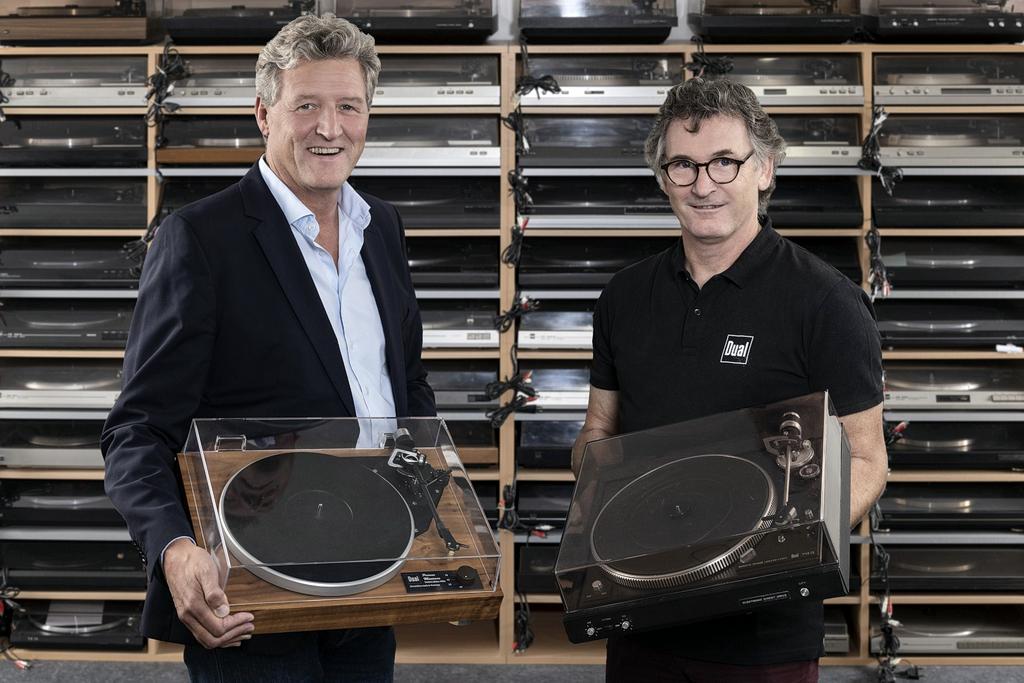
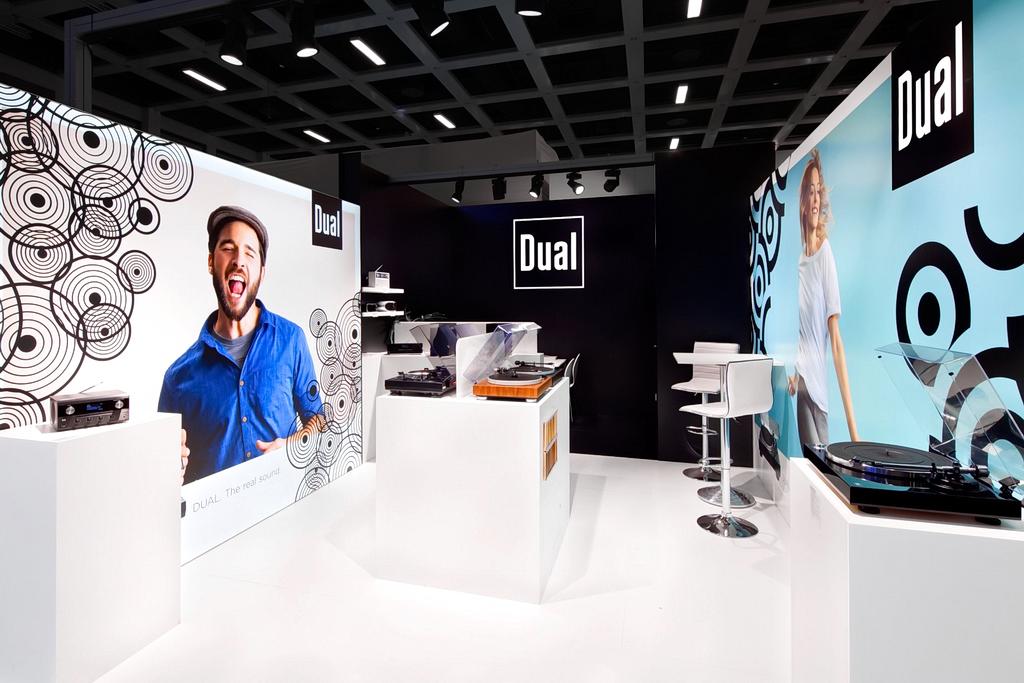
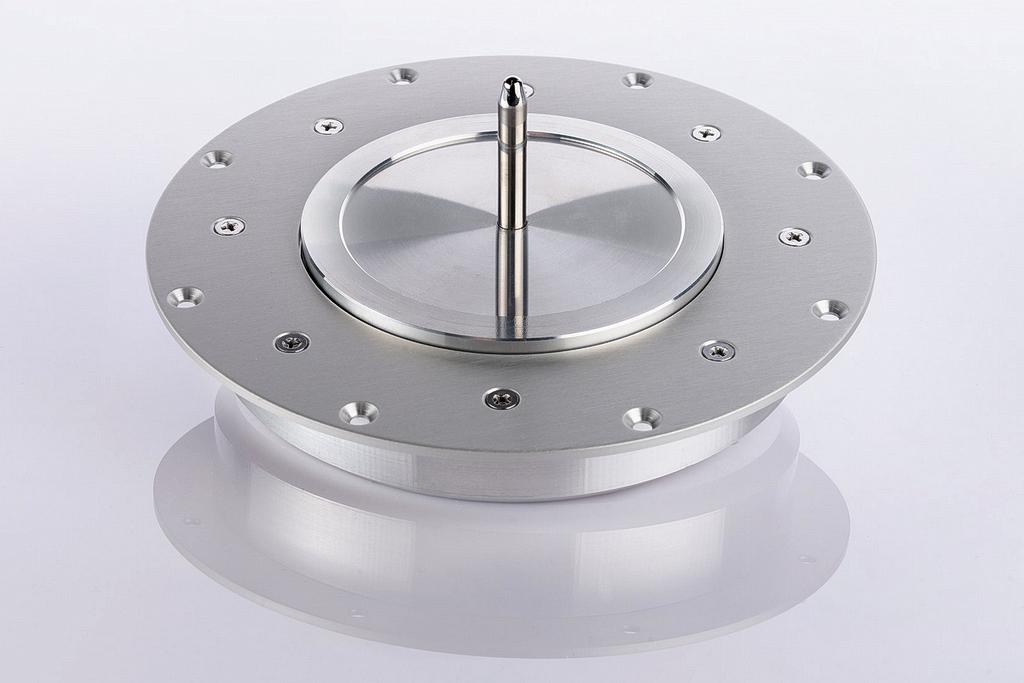





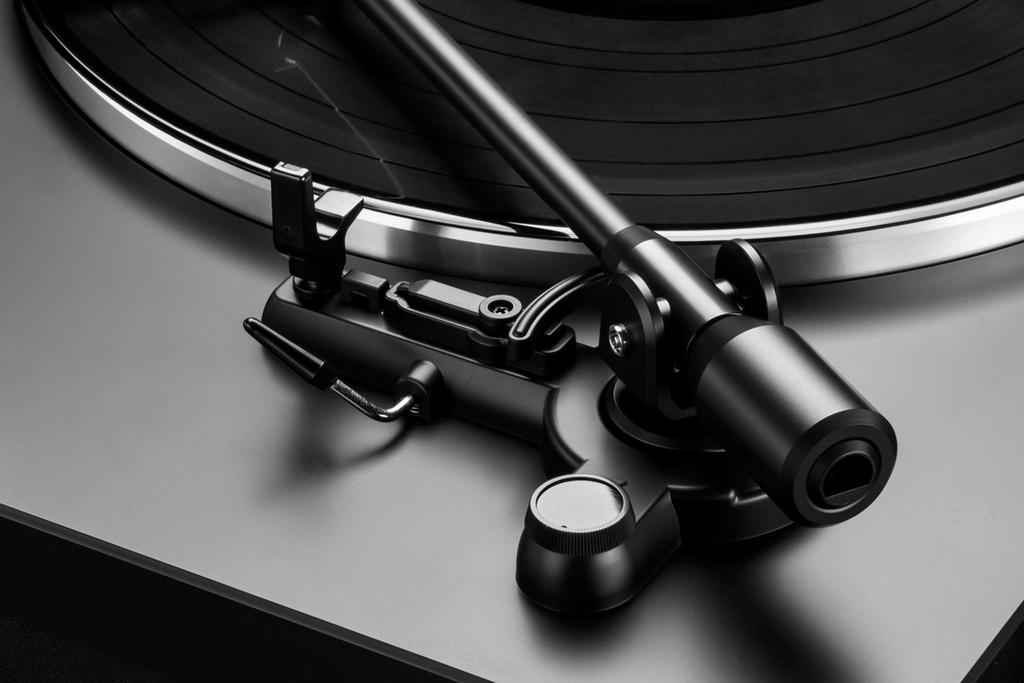
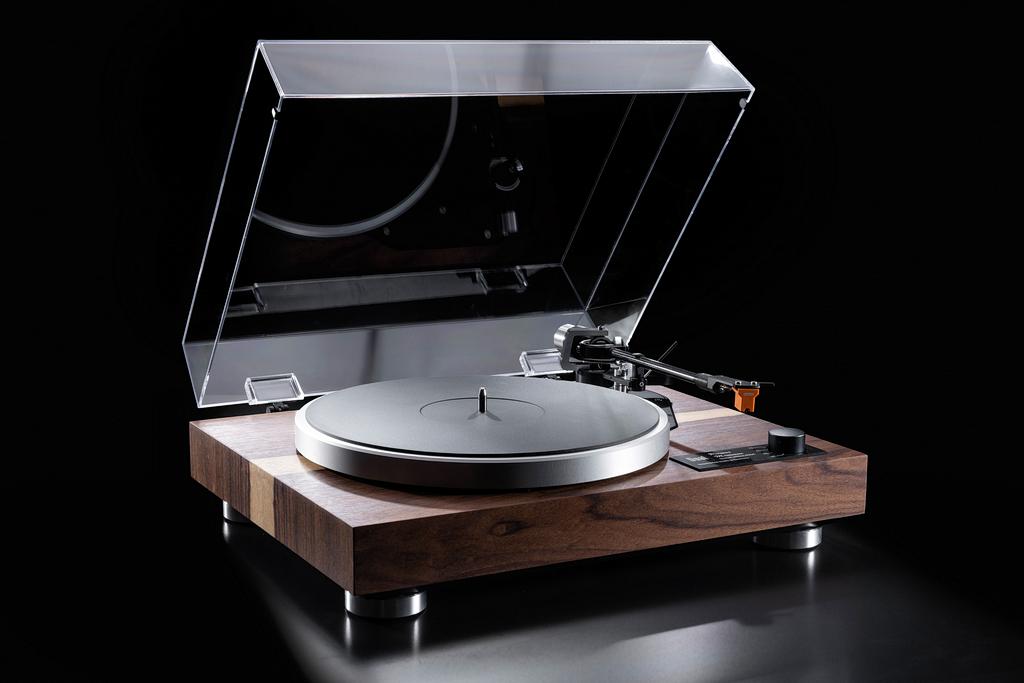
Epilogue
The history of Dual over a hundred years cannot be summarised in a single article. Nevertheless, I decided to take into account the fact that some of the topics will have to be summed up in just a few sentences and that I won't have enough space to describe many of the legendary devices in detail. Enthusiasts of the German brand will undoubtedly wonder where the admiration for their beloved drives, for which the user had to make the base himself, went. A separate chapter of this story could be written by fans of vintage amplifiers and tuners from the 1970s. However, I decided to focus on the most important events, technical innovations, and turntables because it is precisely to them that the German manufacturer returned after many years, and on their basis, it intends to build its market position again. The Germans are full of optimism, and it is hardly surprising. They managed to bring back to life a brand that, for many music lovers, is a true legend. What is more, they conducted this operation at the best possible moment. Maybe even a few years too late, but after introducing the first products, they are already surfing the wave of vinyl boom, which almost no one expected fifteen years ago. Today it is already known that this is something more than a fad. Who knows, maybe this is just the beginning of a process that will stabilize sales of black records and the equipment used to play them at a level that we will reach only in a few, maybe more than ten years? Maybe vinyl will again become the primary physical medium for music? The important thing is that, along with the whole industry, iconic brands such as Dual are being restarted. A certain part of the technical, business, and cultural heritage is also being reborn with them. And yet this is only the beginning...
Article created in cooperation with Dual.


